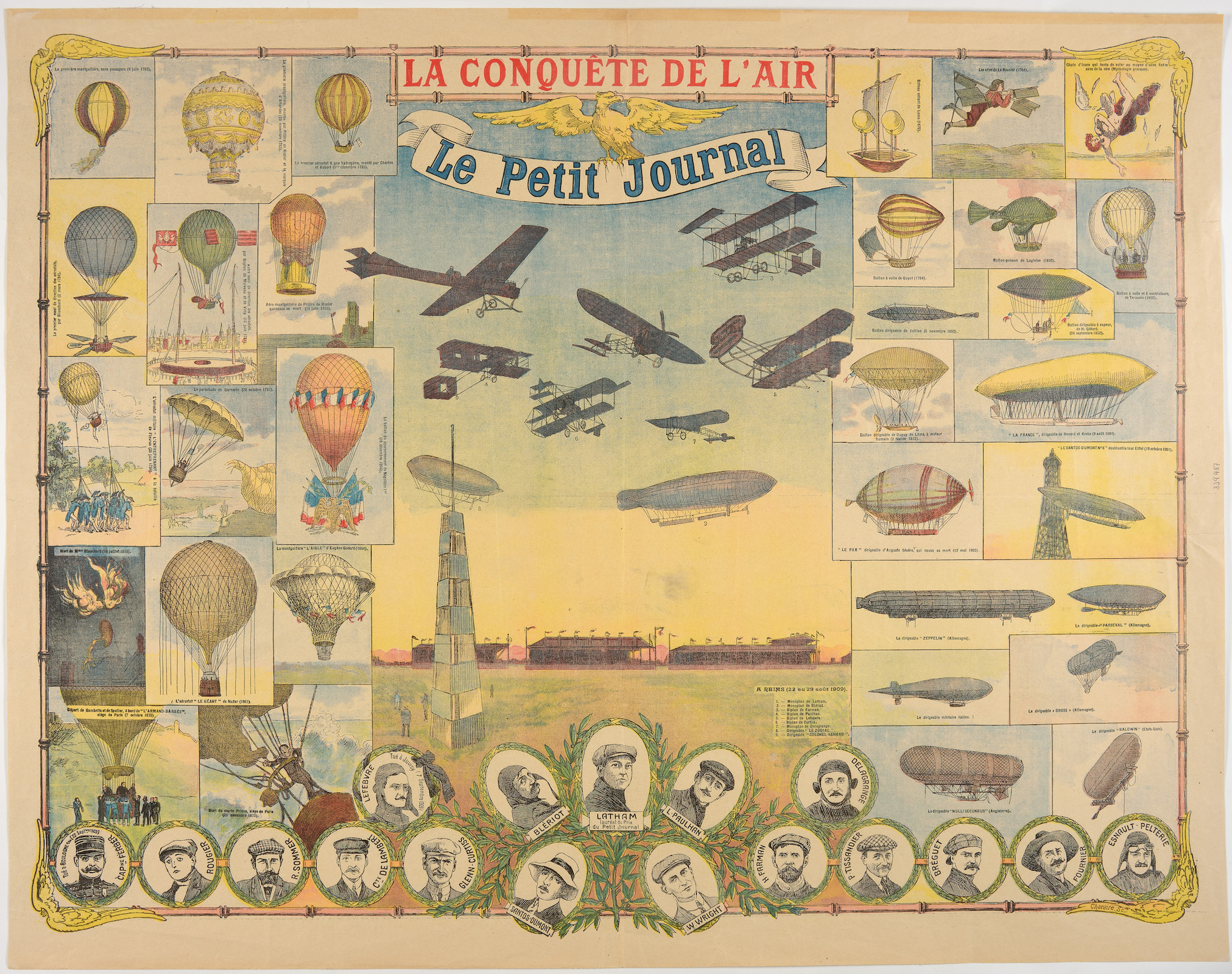“The Conquest of the Air” – a pivotal moment in aviation history
(AVIATION.). Le Conquête de l’Air
Paris: Le Petit Journal, 1909
23 x 30 in. Color lithograph. Minor repairs on verso, light wear. Fine condition.
This spectacular color lithograph commemorates the Grande Semaine d’Aviation of 1909, the first international public flying event and a turning point in aviation history. The powered aircraft featured at the event dominate the center. Surrounding it are portraits of pioneering figures in flight (including Wright, Curtiss, Latham, Fournier, and Blériot) and vignettes from aviation history.
The event, held at Reims, France in August 1909, attracted more than 500,000 spectators to watch famous aviators compete in contests of distance, altitude, and speed, all from the massive grandstands constructed for the event. The meeting signified a transition in the public perception of flight. Once an experimental curiosity practiced by a few, it came to be seen as a viable technology with the potential for practical application.
This print, a supplement to Parisian newspaper Le Petit Journal, highlights technological advances in aviation history. The fall of Icarus is depicted in the upper right corner, next to two unrealized designs for flying machines from the 17th century. Vignettes show the various hot air balloons of the 18th century and capture the 19th-century shift to airships capable of controlled flight.
At the center, the collection of heavier-than-air planes flown at Reims in the early 20th century point to the transitional nature of this pioneer era. In 1903, the Wright brothers achieved a twelve-second flight in their biplane; in 1909, technology had advanced enough for Louis Blériot to cross the English Channel in a powered monoplane. The array of airplanes shown in Reims exemplified this transformational period as Wright-style flyers and propeller-led monoplanes were featured side by side. The debut of lightweight, more reliable engines at Reims also indicated the advances that were to come.
The Grande Semaine showed that heavier-than-air flight was proven to be a viable technology full of possibilities. The next few decades brought the first major wartime use of airplanes, the invention of the jet engine, and growth of commercial aviation. Within sixty years, man’s “conquest of the air” had extended to outer space.
This is a visually stunning record of a critical moment in technological history, marking the beginning of modern aviation.
$2,500



